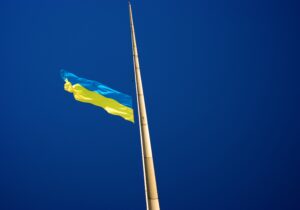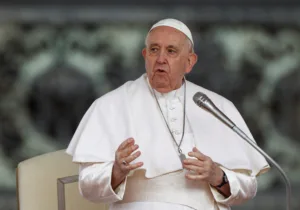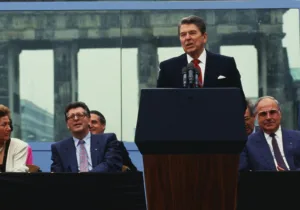Though Russia’s full-scale invasion of Ukraine has taken some unpredictable turns, the demolishing of Russian and Soviet symbols remains a reliable constant. While the total number of dismantled memorials remains unknown, since February 24, 2022, over 10,000 of statues, plaques, and toponyms (all hereafter collectively referred to as monuments) have been removed and/or renamed. Ukraine leads this wave with Latvia, Estonia, Poland Lithuania, Bulgaria, and Finland, participating as well. Additionally, many Central and Eastern European countries have renamed streets near Russian embassies to pro-Ukrainian identifiers.
On the surface, this newest wave does not appear that significant. After all, Russian and Soviet monument removals in the 1990s and 2010s were greater in the number of symbols dismantled and nations involved. Moreover, many of the recent changes are in reference to USSR monuments, which reflects a continuation of previous decommunization movements. Still, the new round of historical decoupling matters for scholars of Russian and Eastern European Studies for three reasons.
First, the monument removals signal an expansion of the Russian and Ukrainian historical memory divide regarding the Russian Empire’s legacy. Before 2022, the two nations’ contested history centered on the USSR’s legacy with symbols of the beforehand Russian Empire being left unscathed. But since Russia’s full-scale invasion, Ukraine’s deconstruction of pre-USSR markers is on full display.
One example of this changing dynamic is Ukraine’s removal of monuments named after Russia’s most famous poet: Alexander Pushkin (1799-1837). Since May of 2023, Ukraine has removed 34 symbols of the man. While this may seem insignificant, the dismantling of the poet cuts at one of Russia’s greatest forms of soft power. Many Russians credit him for modernizing Russian literature, and his criticisms of the Russian clerical and autocratic authorities of his time inspire today’s Russian liberals.
Conversely, Pushkin’s endorsements of Russian imperialism and colonialism make him an excellent tool of Russian propaganda to solidify territorial and cultural domination over newly conquered regions. In the words of Ukrainian writer Oleksandr Mykhed, “Putting up a monument to Pushkin has always meant marking territory for the Russians.” This is evident in Ukraine where almost 600 streets bear his name, only trailing cosmonaut Yuri Gagarin and Ukrainian poet Taras Shevchenko. Moreover, when Russia took over the city of Kherson last year, they set up a billboard of Pushkin. By removing his likeness, Ukraine also rejects Russia’s version of history that pre-dates the USSR.
Another example of the fracture of Russian and Ukrainian historical memory concerning the Russian Empire is the recent legal developments in Ukraine. In April of 2023, Ukrainian President Volodymyr Zelensky “signed a law banning Russian place names.” In June, he signed another law that legalized “the removal of monuments [that] are a symbol of Russian imperial and Soviet totalitarian policy and ideology from the State Register of Immovable Monuments of Ukraine.” While the implantation of these laws will take time, they ensure the dismantling of countless more monuments commemorating the Russian Empire. Thus, further highlighting how Ukraine’s recent demolishment of Russian symbols marks the growing division between Russian and Ukrainian views of the Russian Empire.
The second reason has to do with the academic discussions regarding Russian colonialism/imperialism. Since Russia’s full-scale invasion last year, many scholars (including Thomas De Waal, Serhii Plokhy, and Volodymyr Yermolenko) have argued that Russian Studies must be reevaluated in light of the legacy of Russian imperialism, whether Tsarist or Marxist, and its impact on Russian behavior today. The monument removals contribute to this discourse because they expand the academic chatter from colleges to the public square.
The persistence of this debate creates a dilemma for scholars. On one hand, monument removals present an opportunity for Russian and Eastern European specialists to offer support for such actions as an avenue for decolonizing/de-imperializing Russian Studies. On the other hand, scholars who condone the monument removals risk blurring the lines of personal views and professional scholarship. Regardless of one’s position on the legacies of Russian imperialism/colonialism, the recent demolition of Russian/USSR symbols in Eastern Europe poses a challenge for academic circles in maintaining neutrality.
The third reason the monument removals matter lies in how they could weaken the Russian Orthodox Church Moscow Patriarchate’s (ROC-MP) position in the Eastern Orthodox world. The attenuation of ROC-MP’s influence in Eastern Europe due to Patriarch Kirill’s pro-Kremlin stance has already been substantial. However, Ukraine’s recent De-Russification laws will accelerate this trend by facilitating the dismantlement of more monuments that endorse Russian imperialism in Ukraine, which is likely to include symbols of ROC-MP figures. As the full effects of the law will be felt in the coming years, Kirill is likely to condemn the removals of prominent ROC-MP monuments and double down on his support of Russia’s invasion of Ukraine. These actions would further diminish the ROC-MP’s position in Ukraine as well as other countries (most notably Belarus, Kazakhstan, and Moldova), and enhance the Patriarch of Constantinople’s power in the current schism between Moscow and Constantinople.
In short, while the recent Russian and Soviet monument removals seem insignificant compared to their predecessors, they matter to scholars of Russian and Eastern European Studies for three reasons. First, they signal an expansion of Russian and Ukrainian historical memory divide regarding the Russian Empire’s legacy. Second, they broaden the public conversation concerning the impact of Russia’s colonial/imperialistic behavior on Russian Studies. Finally, they could further weaken the ROC-MP’s power in the Eastern Orthodox world. Russian and Eastern European specialists would do well to monitor and measure the long-term impact of these developments.





